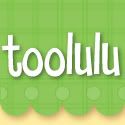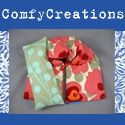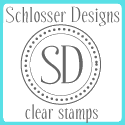
Very few tools are needed in order to knit. It makes it a great hobby to start because you can start with just a couple of sticks and some string. I don't expect all of you to become obsessed with knitting like I did, but you should have at least a basic knowledge of the different types of needles out there and what they are used for. It will help if you plan to expand your knitting to include other projects.
Sizes
Needles come in all sizes, lengths, and varieties. The sizes are all rather standard. The US has a numbering system, which like our measurements, are totally not intuitive. The rest of the world measures the needles by millimeters. Many knitting patterns are written by non US designers so you'll want to double check that you're getting the correct needle size.
You can get needles as small as size 0 (and smaller) and they can go up to size 50 and beyond. The smaller the number, the smaller the needle. For worsted weight yarns, a needle size of around 8 is recommended.
When you are just starting out, I recommend one of three things:
1. Buy the needles called for in the pattern.
2. Buy an assortment of needles. You can get an interchangeable set
like these using a 40% off coupon (or wait for a 50% off sale). This can be a bit of an investment and the needles aren't the highest quality. But, for most projects and beginning knitters, this is a good option. In fact, I still use mine for a lot of projects.
3. Check thrift stores,
eBay, your grandma's closet, etc... You'd be surprised how easy it is to scrounge up some needles if you just ask around. They might not always be the sizes you need, but stash them away because chances are, you'll have a project that calls for them soon enough.
Styles
Straight NeedlesStraight needles are the most common and when you think of knitting needles, this is probably the image that sticks in your mind. You use straight needles for projects like scarves, dishcloths, baby sweaters, and any other small to mid-size project knit back and forth.
Circular Needles
Circular needles are just two needles connected by a tube. Circulars can be used on any project that straight needles can do and they are also used for anything knit in the round. Hats, sleeves, cowls, socks, etc... must be worked on circulars (or DPNs-see below). Because they are so versatile, I work almost exclusively with circular needles. It really is a matter of personal preference, though.
Double Pointed Needles (DPNs)
Double pointed needles are used for working smaller items in the round. Because they have points on both side, you can knit them either way and go around in a circle. I use DPNs for socks. There are techniques for using circulars for socks and other small in the round items. Again, it comes down to personal preference.
Materials
You'll find needles made from plastic, bamboo, aluminum, wood dowels, birch, nickel, etc... There is no way of knowing which material you might prefer. If you shop at a local yarn shop, they may let you try them out. Or, you can decide based on what you think you might enjoy the most.
Remember-- If you want to join the knit a long to make
this cowl, you'll need to purchase the following:
1 ball Rowan Big wool, 100% wool, 87 yards per 100g OR yarn to match yardage and gauge
---Chances are you won't find Rowan Big Wool at your local craft store. A good option would be Lion Brand Wool-Ease Thick & Quick and it is on sale at Hobby Lobby this week (through 1/17). You can also check for coupons online or in the newspapers.
Size 13 (9.0mm) circular needle (16 inch length). This project is worked in the round so you'll need circular needles. If you can't find this particular needle size at your craft store, they are available
here. I also found
this set on Amazon. I can't vouch for the quality as I have yet to try them, but they are a great deal!
The next Knitting School lesson will be casting on so you'll want to make sure you have your supplies.
Labels: knitting, knitting school, learn










































































